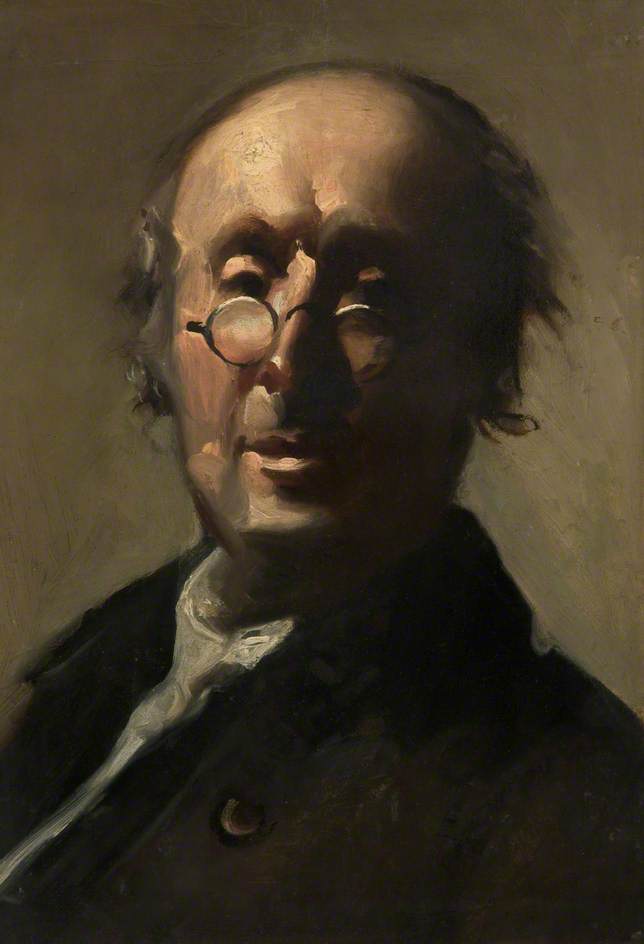Tim Bobbin

Tim Bobbin, real name John Collier, was born in Urmston Lancashire in either 1708 or 1709 and baptised in 1710. John’s was a humble family, his father being a poor curate and schoolmaster working in Stretford and earning £30 per year until he became blind at the age of 46. The family was a large one, often ‘feeling the iron tooth of penury’ and John was brought up, so records suggest, on water porridge, buttermilk and jannock, a dark-coloured bread or cake made of oatmeal, a diet he had until he was 13 or 14. The family was so poor that John had to give up on any hope of further education, instead earning a living first in Mottram as an apprentice to a Dutch-loom weaver where the shuttle was thrown by hand, and then at the age of 17 becoming an usher in a school, the equivalent of a teacher practitioner, on £10 per year. Later, under license from the Bishop of Chester he was promoted to master to ‘instruct children in the art of English, writing and arithmetic in the Free School of Milnrow’ the village in which he spent most of the rest of his life.

John married Mary Clay from Flockton near Huddersfield in April of 1744. There is some dispute as to whether they got on, some calling them an ill-assorted couple and John referring to Mary as ‘his crooked rib.’ However, her dowry of £300 would have been welcomed by John although some suggested that most of it was spent by him on drink.

Notwithstanding the dowry, the growth of the family by 4 sons and 5 daughters meant that John needed to supplement his income in any way he could. At one point in 1751 he left the profession of educator to become a clerk but quit after only 12 months, returning to schoolwork in Milnrow. The job of school master was not well-enough paid for John though, and he tried to supplement his income by writing and illustrating satirical poetry, completing his first satire, The Blackbird, in 1739.

Over time John, now Tim Bobbin, found success with his satires though by no means accruing a fortune in doing so, selling one engraving in 1763 for sixpence (plain) and a shilling (coloured). Styling himself as the Lancashire Hogarth, his targets for caricature tended to be the establishment and particularly the clergy. His first work, ‘A View of the Lancashire Dialect, or, Tummus and Mary’, was published between 1746 and 1750 when he was in his late 30’s. The piece was in the form of a comic dialogue between Thomas and Mary along with which – even at that time – was a necessary glossary of Lancashire dialect words and phrases. It was a great success particularly in the north of England and went to reprint many times. Before the days of logistics and mass publication Tim Bobbin took it upon himself to sell his work and he became a regular sight in Rochdale public houses hawking pieces. Sometimes he would sketch people in a pub, his prices depending on how many heads were in the portrait !
In 1773 Tim Bobbin published a dialect poetry collection, ‘Human Passions Delineated’ in which he was savage in his satire of the fraud and corruption within both upper and lower classes. He saved his harshest criticisms though for what became known as ‘pluralist’ clergy. These were ministers who were paid for several livings at once even though they hardly ever set foot in the town of their particular church. Furthermore, many of these clergymen – although claiming to be pious – were often covetous drunkards. Tim Bobbin laid into them with fierce cartoons and the sharp point of his poetry. In a reflective moment he wrote that ‘these men I can neither love nor reverence. I have an antipathy against them which I cannot conquer, because I think of them as the pests of society and disgraceful blots to all religion.’ His other targets were dentists and quack doctors.
In his private life Tim Bobbin was a practical joker, at one time applying to be Rochdale Parish Church’s organist although not being able to play well, though he did play the hautboy (an old oboe) and the flute at home. As part of his application, he offered to cure the church organ of any illness which it might have had.
Tim Bobbin lived in a house by the river Beal and close to a pub which used to bear his name but now, unfortunately is simply called ‘The Bobbin’. Another pub close by, now long since gone was called The Stump and Pie Lad and this used to have a self-portrait of Tim Bobbin over the door.
In later life his painting had to stop due to attacks of St Anthony’s Fire which produced severe rashes particularly in his right arm and in time he suffered paralysis,

In 1786 Tim Bobbin, John Collier, died, leaving the sum of £50 to his family. The story goes that 20 minutes before his death he wrote ‘Jack of all trades…left to lie i’th dark’ which appears on his gravestone although the doggerel which accompanies it in Rochdale Parish churchyard was not written by him. However, the great romantic novelist Sir Walter Scott visited the grave in 1792 and called for the tombstone to be raised up and protected by a fence. One thousand people subscribed £1 each and this was erected to commemorate – even to this day – one of Rochdale’s great literary and cultural figures. Buried along with his wife he, as ever, had the last word : ‘Here lies Tom and with him Mary, Cheek-by-jowl they never vary.’